Charlemont on the Grand Tour
Published in 18th–19th - Century History, Features, Issue 2 (Mar/Apr 2005), Volume 13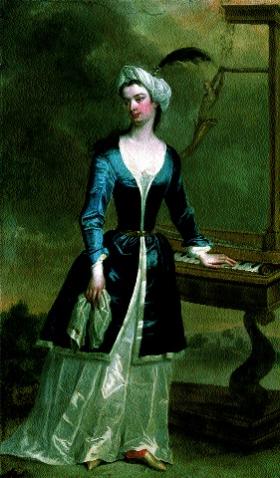
Having one’s portrait painted in ‘Turkish’ garb, like this anonymous Anglo-Irish lady, became extremely fashionable in the eighteenth century. (National Gallery of Ireland)
Last year’s Athens Olympics and Turkey’s efforts to join the European Union have naturally drawn our attention to the eastern Mediterranean. While travel to mainland Greece, Turkey and the Mediterranean islands is now commonplace, the situation was very different in the mid-eighteenth century, when one of the pioneers of modern Mediterranean travel visited the area in 1749. In later life Lord Charlemont would become an arbiter of taste in the fields of architecture and literature. He would command the Irish Volunteers alongside Henry Grattan, gain legislative independence for the Irish parliament, and die in 1799 just prior to its suppression. In 1749 this was still ahead of him, and the young lord had other concerns.
Mother was concerned at her son’s slide into debauchery
Like many parents when their children reach eighteen, James Caulfeild’s mother was concerned at her son’s slide into debauchery, as was his tutor, Revd Edward Murphy. Unlike most families, the Caulfeilds’ resources stretched far enough to allow James to be despatched to Europe, along with the watchful Murphy, for the best part of a decade, to remove him from the perceived negative influence of Dublin society. While Caulfeild did not manage to avoid all of the pitfalls of youth (some of his activities in Ottoman territory would have raised eyebrows in polite society), he did use the time to expand his art collection and gain valuable experience.
From a historical point of view, his activities in western Europe contain little of interest. His voyages around the Mediterranean are a different matter. Before 1800 British and other European travellers’ access to the Ottoman Empire was restricted. Lord Sandwich had travelled in Greece, Asia Minor and Egypt a decade before, and a book on his experiences—A voyage performed by the late earl of Sandwich round the Mediterranean in the years 1738 and 1739—would be published in 1779, seven years after his death. An earlier work, Wheeler’s Journey in Greece, based on his travels there in 1675, remained the standard text for travellers, so Charlemont and his companions were, to a certain degree, setting off into the unknown. He had, however, met with Sandwich himself in Rome and may have been influenced by him to try his luck in the Mediterranean.
Charlemont’s presence in Rome influenced several other travellers to the Orient, who in turn influenced the young viscount. In addition to his own work in Athens, he helped to fund the expedition by James Stuart and Nicholas Revett, whose two-year systematic survey, published in three volumes as The antiquities of Athens, would eclipse his own and become one of the foundation stones of classical archaeology, in addition to being highly influential in contemporary architecture. Although the work does not bear his name, this was almost certainly his greatest contribution to classical scholarship. He had also met James Dawkins and Robert Wood in Italy, the latter from Trim, Co. Meath. Wood had travelled in Greece, Egypt and the Aegean islands and may have given Charlemont the benefit of his experience. It is possible that Charlemont had originally planned to travel with Dawkins and Wood, but it seems more likely that he decided to go under the influence of Lord Sandwich and Lord Moira, both members of the Society of Dilettanti, who had travelled the Mediterranean together.
Diaries lost but two essays survive
The diaries the young viscount kept have been lost but two essays based on them have survived. These were reworked several times over the course of his life and were intended to serve as examples of a new form of travel writing. Rather than concentrating his attention on antiquities, Charlemont intended to leave a record of the lifestyle and character of the peoples he had encountered on his travels. At the same time those places of classical interest he encountered along the way were not ignored. These essays were not intended for publication, although Charlemont seems to have considered the idea, but rather for distribution among an intimate circle.
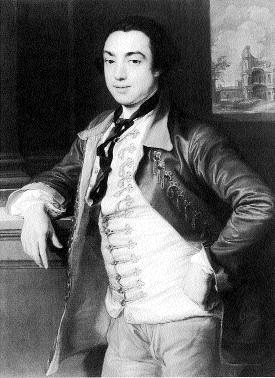
While in Rome after his return from his Ottoman travels (c. 1754) the young James Caulfeild had this portrait painted by Pompeo Batoni. (Yale Center for British Art)
They provide a valuable insight into the sentiments and opinions considered appropriate for private circulation among the cultivated aristocracy of his time.
Charlemont arrived at an interesting point in the relationship between the West and Islam. The Ottoman Empire was no longer the threatening force it had once been, but was not yet so weak that managing its collapse or robbing its corpse, according to taste, was a major concern of European statesmen. For a brief period the empire was a subject of interest rather than a source of fear or a playground for greed. The Turks, aware of their growing technical inferiority, did their best to alleviate it by importing technology and specialists. These efforts would ultimately fail, but this was far from clear in 1749 and the true extent of Ottoman decline would only be revealed by Bonaparte’s expedition to Egypt in 1798. Charlemont’s travels were an early example of an interest in Turkish affairs and customs (having one’s portrait painted in Turkish garb became extremely fashionable in the late eighteenth century) and could be said to prefigure the nineteenth-century alliance between the British and Ottoman empires.
The party travelled aboard the ex-French frigate L’Aimable Vainqueur (under new ownership courtesy of the Royal Navy), which they had chartered for the trip. She was armed, and crewed by professional seamen, as the Mediterranean was still the haunt of pirates. She set off from Livonia for Constantinople in April 1749 in order to obtain a firman, a travel document issued by the Ottoman government, without which it was illegal to travel within the empire. Each of Charlemont’s visits to Ottoman-held islands and settlements opened with the presentation of the firman to the relevant authorities, who often viewed it with some suspicion.
Positive view of the Ottoman legal system
The party’s time in Constantinople is described in the Turkish essay, along with Charlemont’s views on Turkish customs and officials. He visited the Porte (the administrative centre of Constantinople) in the party of Pisani, the dragoman (translator) who dealt with English affairs, and witnessed the Ottoman judicial system in action. He compared it favourably to that of his own land—notably in the speed with which justice could be obtained in the courts and in the lack of lawyers (this is qualified somewhat by a later passage on corruption among the judiciary and on the tendency of military officials to override their civilian counterparts).
He wrote at great length on the confinement of women in Turkey and also on the prevalence of homosexuality, which he abhorred and ascribed to sensual overindulgence and the desire for novelty. On the whole, Charlemont’s opinion of the Turks was favourable, and many of the comments in his Turkish essay are dedicated to dispelling prejudices against them. He was impressed by the police force in Constantinople (and elsewhere in the empire) and by the courtesy and grace of most of the inhabitants. He took the time to visit the public baths and brothels of the city, as well as the ambassadors and other representatives of Christian powers. Interestingly, the party was upbraided for visiting the baths owing to the risk of contracting the plague, which was normally present somewhere in the bathhouse.
Richard Dalton’s illustrations
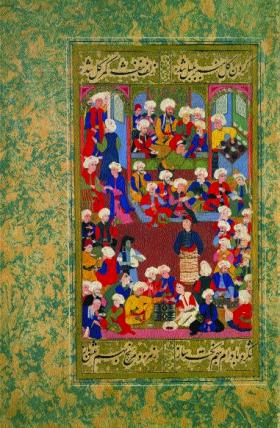
A seventeenth-century Ottoman coffee house. (Chester Beatty Library)
On the way Charlemont and his companions, Francis Pierpoint Burton, Alexander Scott and Revd Edward Murphy, ‘prevailed upon’ (according to his account) Richard Dalton, an English draughtsman they encountered off Sicily, to accompany them. This made up a major deficiency in their preparations since an artist was considered a necessity on a properly organised tour. Dalton’s work has been criticised as being inadequate, but it has considerable historical importance. He provided the illustrations that accompanied Charlemont’s essays (admittedly not as many as Charlemont had expected) and published other drawings made on the trip. His pictures complemented the party’s survey work, organised by Murphy, and represented the first accurate illustrations available to western readers of structures such as the Acropolis and the Thesion.
Charlemont’s voyage led to some notable breakthroughs in antiquarianism. His travels took him as far as Egypt, and he acquired a large number of artefacts, with which he later decorated the Casino. His main antiquarian achievements were his rediscovery of the ancient city of Knidos, between the Mediterranean and the Aegean, and his identification of Bodrum, on Turkey’s Aegean coast, as the location of the city of Halicarnassus. Dalton’s illustrations of Athens could not have been created without him. He also left the first modern description of Piraeus as it appeared in 1749 (little visited, as travellers tended to head to the Greek islands rather than the mainland), which identified some of the surviving features of the ancient harbour. This was complemented by a drawing of Dalton’s that looks inland toward Athens. Charlemont’s descriptions of these harbours are of notable interest to maritime archaeologists. Knidos, in particular, has a superbly preserved set of ancient harbours, among the finest surviving examples from the classical world. Charlemont’s account of it was the first since its abandonment. It has since been excavated by Professor Ramazan Ozgan of the Seljuk University in Konya, among others.
Charlemont left Constantinople and headed to Alexandria in Egypt, stopping en route on Lesbos, Chios, Mykonos, Delos, Naxos, Tinos, Syros and Paros. In his essay on Greece he described the custom of female primogeniture on Lesbos in great detail, and later presented a paper to the Royal Irish Academy on the subject. On Chios he encountered an Ottoman admiral who was in the area to collect taxes. While unimpressed by the quality of Turkish seamen, Charlemont admired the religious tolerance shown by the empire. The Christian slaves on board the admiral’s flagship were initially put under mild pressure to accept Islam, but had a small chapel aboard ship in which they were allowed (in fact compelled) to worship. Charlemont noted the predicament of a Catholic English slave, who seemed resigned to his lot, but seems to have made no effort to obtain his release. He also noted with approval that Roman Catholic proselytism was actively discouraged in Ottoman territories.
Temporary marriage on Mykonos
On Mykonos the young Irishmen, leaving their elders in bed aboard ship, had some mild misadventures while searching for prostitutes and took the time to investigate reports of a curious form of temporary marriage on the island. While concluding that the service was too expensive for many to avail of it, Charlemont did note classical parallels for the practice, demonstrating a commendably rigorous devotion to scholarship.
Sadly, none of Charlemont’s written records of his time in Egypt have survived. He seems to have taken the time to acquire a mummy, which was later shipped to Ireland for him, along with enough assorted antiquities to fill a small Egyptian wing in his villa at Marino. (Like several other classical collections from Irish big houses, notably Russborough and Westport, Charlemont’s has long since been dispersed through loss and sale.) Dalton’s drawings show evidence of an interest in the annual preparation for the Haj. While concealed in a nearby house, he sketched the procession that accompanied a holy camel carrying cloth for the sanctuaries at Mecca and Medina, a sight forbidden to Christians. They also visited and sketched the pyramids, where, Charlemont later informed Samuel Johnson, they encountered a serpent in one of the chambers.
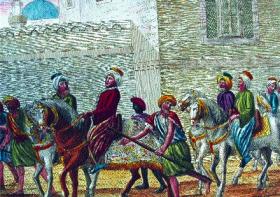
Turkish beys in Cairo by Richard Dalton, an English draughtsman, ‘prevailed upon’ by Charlemont and his companions to accompany them on their trip. (Trinity College, Dublin)
After departing Alexandria, L’Aimable Vainqeur made for Cyprus but, frustrated by contrary winds, the party turned for Rhodes. While tacking off the island, Charlemont and his companions made a landing on Asia Minor at the site of an ancient city that Charlemont, correctly, identified as the ancient port of Knidos. He left the first modern description of the ancient harbours and city walls to reach the West. He described the surviving theatre, in fact one of two, in great detail and recorded its measurements. He also did his best to identify the surviving temples with those described in the ancient texts, based on the design of their columns. Dalton made some illustrations of sculpture from the city, which he later published.
One of the Seven Wonders of the World
In Bodrum, where the Ottoman authorities distrusted both the travellers and each other, Charlemont made his most important discovery, which ranks among the most significant ever made by an Irish antiquarian. He succeeded in gaining entrance to the castle, where, while unable to take precise measurements, the group spotted the remains of some classical sculpture incorporated into the walls. Charlemont correctly identified these as the relief sculptures from the tomb of Mausolus, the Mausoleum, one of the Seven Wonders of the World. He expressed gratitude that
‘we have reason to suppose that the world is still in possession of a portion at least of these masterpieces which have been the admiration of all antiquity; and we cannot but flatter ourselves that we have had the glory of being the discoverers of this inestimable treasure.’
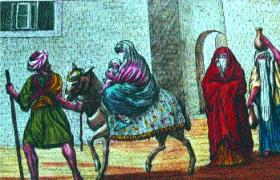
Women in Cairo by Dalton—Charlemont wrote at great length on the confinement of women in Ottoman Turkey. (Trinity College, Dublin)
The frieze has since been removed and is on display in the British Museum, although after an admittedly brief inspection the authors could find no trace of acknowledgement for James Caulfeild.
Charlemont also identified Bodrum from ancient sources and extensive surviving surface remains as the likely location of ancient Halicarnassus. He confirmed this by translating an inscription that he noticed built into the wall of a shoemaker’s house. He paid a sequin for the privilege of copying this down, since it required the removal of the owner’s wife to a relative’s harem. In view of the young viscount’s activities and interests elsewhere on the Greek islands this may have been a wise precaution.
Charlemont’s arrival at Piraeus gave him an opportunity to visit the surviving classical harbours and to trace the course of the long walls that once connected it to Athens. In Athens itself Charlemont surveyed the Parthenon, running into difficulties with suspicious guards (who forbade the use of most of their survey equipment), and Dalton took the opportunity to draw portions of the Panathenaic frieze, now also in the British Museum, as well as the Erecthion and the Parthenon itself. While their techniques were not up to modern standards—on one occasion Charlemont tested the quality of ancient Athenian stonework by trying to break it!—both men showed considerable attention to detail. Dalton’s plan of the Parthenon was the first accurate survey available in the West, and showed that ‘those architects who had been so amazingly exact in their joints, were not equally so with regard to the intercolumniations, since upon the most accurate measurement we found the columns were by no means equidistant’.
Return to Italy
Charlemont’s antiquarian work in Athens was his last in the east. The group returned to Italy via Malta, where they escaped the plague, arriving in early 1750. Caulfeild remained in Rome for five years. While in his later essays he stressed the sociological aspects of his trip, his original intention was probably antiquarian. He took detailed measurements of an aqueduct on Lesbos, the theatres in Knidos and Halicarnassus, and of those buildings that interested him in Athens. In addition to this, Dalton recorded the sculpture encountered as well as the buildings. Large quantities of material (now dispersed) found their way back to Marino, of which a Greek stele (c. fourth century BC) has come to light in recent years.
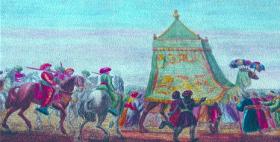
Detail of a religious procession in Cairo, including a ‘holy camel’, by Dalton. (Trinity College, Dublin)
Charlemont remained an active antiquarian scholar on his return to Ireland. He was a member of the Society of Dilettanti, one of the main forces in the field of classical antiquarianism. Classical architecture inspired the Casino, his neo-classical villa, built at Marino near Clontarf between 1759 and 1773 and stocked with his Mediterranean and Italian acquisitions. Sadly, his aristocratic disdain for printing meant that one of his principal discoveries, the inscription at Bodrum, remained largely unknown. Charlemont published only two essays on his classical and foreign interests, the paper on Mitylene and a work of Homeric scholarship.
Originally, the essays were to be accompanied by Dalton’s illustrations. The artist took these to England with him in 1750. Sadly, Charlemont broke contact with Dalton after the latter tried to claim his patronage for a book of prints from the journey, and seems to have abandoned a planned essay on Egypt until Dalton’s work on the same country was complete. Politics got in the way of the Egyptian essay, and Dalton’s work did not live up to its promise of describing the Manners and customs of the inhabitants from drawings made on the spot when it was finally published in 1791.
The essays and Charlemont’s later career
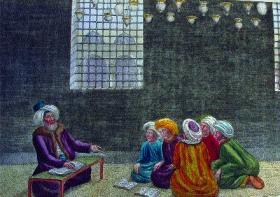
Mullah instructing students in Constantinople by Dalton. (Trinity College, Dublin)
The activities of Charlemont and those like him who went east on errands of curiosity and came back with souvenirs which it would now be illegal even to purchase, let alone export, have been considered as the precursors of the later activities of empire-builders and colonial surveyors. This is an unjustified use of hindsight. While he expressed hopes for the liberation of Greece, which became independent in 1830, and criticised aspects of the Ottoman Empire (in 1749 still a great power), the essays show no evidence of the contempt for the Orient typical of many later exchanges between the West and Dar-al-Islam. Nevertheless, there is much in Charlemont’s essays, and in his later politics, that the modern reader will find distasteful.
While capable of putting aside Western prejudices against the Turks, to whose manners he dedicates his Turkish essay, he proved unable or unwilling to do so in the case of his fellow Christians. Charlemont’s bemused contempt for the Catholic religious ceremonies he encountered in Italy and his speculations on the chastity of Orthodox nuns mark him as a man of his time and class. The specific issues he raises, notably on flagellation and patently fraudulent miracles in Italy, are valid ones to modern ears, but his failure to turn his perceptive eye to similar issues in his own religious background suggests that his distaste was mainly directed at Romish superstition.
Charlemont’s comments on the Kisler Agha, or Master of the Black Eunuchs, in Constantinople show evidence of a quite virulent racism. He specifically excludes the Ethiopians from the comments he applies to the ‘Nubians’, an example of the later European habit of categorising racial groups so that one could show precisely the right level of contempt for each. The situation was probably exacerbated by the fact that the individual in question seems to have been an especially unpleasant Ottoman functionary, and also by an underlying unease with sexual practices or characteristics differing from his own. Charlemont’s hatred for him leads to a quite extreme passage on the subjection of Athens, which he praises for its ancient glories while deploring its modern wretchedness and subjection to ‘this despicable thing’—not, the reader should note, the sultan, ‘the excellent Mahmud’, but the Kisler Agha, who has placed above them the ‘slave of the slave of an emasculated negro who is himself a slave!’
Few men entirely escape the prejudices of their own time and place, and Charlemont would retain many of these attitudes in his later career in Ireland. He supported Catholic relief but would oppose full emancipation. His distaste for large mob enthusiasms (whether religious or political) can be detected in his increasing distance from the Volunteer movement as its character changed from an Ascendancy army to a revolutionary organisation.
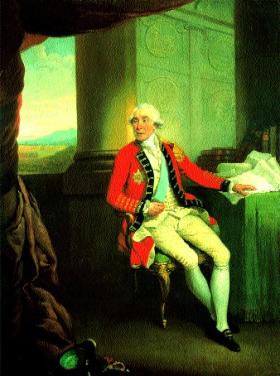
A portrait of Charlemont in later life by Richard Livesay. (National Gallery of Ireland)
The young man’s arrogance and freedom from concern for the opinions of the mob are present in the elder statesman, but so too are his curiosity, intelligence, concern for well-thought-out reform and his love of art and culture. James Caulfeild was a creature of the old order; his eyes looked back in fear to the tyranny of ‘superstition’ and ‘arbitrary power’, whether revolutionary or royal, rather than forward to the ‘Rights of Man’.
His antiquarian interests show similar tendencies to his politics. The modern inhabitants of Greece, unlike the Turks, interested him principally as a source of curiosities, wine or prostitutes, or else as the inadequate successors of their glorious forebears. Charlemont showed little interest in the antiquities of the country in which he spent much of his life, Ireland, or in the manners and customs of the majority of its inhabitants, to whom he referred as ‘slaves’ or, when in a more forgiving mood, ‘our semi-barbarians’. His works concerned themselves with Greece and Turkey, as did his artistic interests.
His political achievements were in the name of a Whiggish constitutional patriotism that excluded most of the populations of Great Britain and Ireland from power as a matter of principal. The populace was conceived of as a threat to property, order and public safety, which ought to be led by its betters for its own good. The revolution in France was the incarnation of Charlemont’s greatest fears and those of his class, and by the time he died the British Empire had been at war with the forces of republican nationalism for six years. The revolution had already come to Ireland and the reaction against it would destroy the independent Irish parliament, which would otherwise have been Charlemont’s monument. In an interesting example of the law of unintended consequences, the Royal Irish Academy, which Charlemont helped to found in 1786, would help to create the basis for a cultural nationalism based on the very Gaelic, Catholic peasantry whom Charlemont himself ignored.
Further reading:
H.C.S. Ferguson, ‘Lord Charlemont’s travels in Greece’, Irish Arts Review (January 1988).
C. O’Connor and B.F. Cook, ‘A Greek stele in Dublin’, The Antiquaries Journal 61 (1981).
W.B. Stanford, ‘The manuscripts of Lord Charlemont’s eastern travels’, Proceedings of the Royal Irish Academy 80C (1980).
W.B. Stanford and E.J. Finopoulos (eds), The travels of Lord Charlemont in Greece and Turkey 1749 (London, 1984).
















